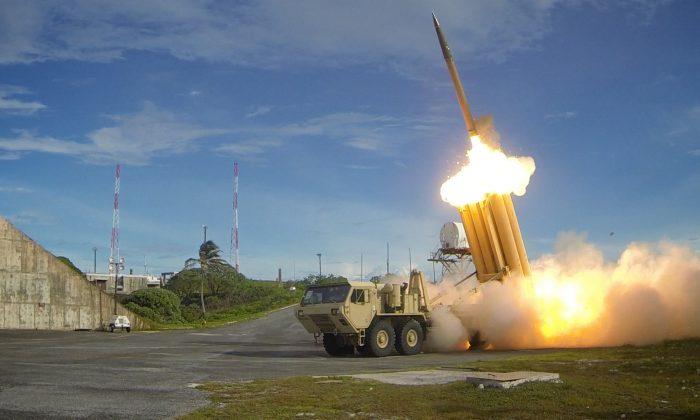The U.S. military is working on several fronts to increase and improve its defense systems, which can guard against potential ballistic missile attacks from countries including Russia and China.
Even as the Trump administration is working to negotiate with North Korea on peace and denuclearization on the Korean Peninsula, it is also moving forward with plans to upgrade its missile defense systems in South Korea.
The Pentagon is thus continuing its former plans to upgrade its THAAD high-altitude interceptor, as well as its Patriot lower-altitude batteries deployed on the Korean Peninsula. This will include the introduction of a more powerful Patriot missile called the Missile Segment Enhancement, strengthening communications between the THAAD and Patriot systems, and new technology that will allow a THAAD missile launcher to cover a wider area.
At the same time, the United States is working to persuade India to drop its ballistic missile defense deal with Russia, which would install Russia’s S-400 missile defense system in the country.
It adds, however, that U.S. Secretary of Defense Gen. Jim Mattis has proposed a waiver for India, which has a strong defense partnership with Russia, under the condition that India works to reduce its military dependence on Russia.
Alongside these programs, the Pentagon is also working to synchronize its missile defense systems.
Lt. Gen. Samuel Greaves, director of the Missile Defense Agency, told the outlet that the findings on how the two systems can be synchronized build on the “effective, layered defense” capabilities of the interceptors in the Ballistic Missile Defense System.
He said the synchronization shown in the test “provides the capability to integrate and synchronize missile defense systems to provide an optimized, layered missile defense.”
“Tactical cross-element communication is critical for war fighter coordination to maximize collaborative defense of assets, conserve interceptors, and provide common situational awareness for combatant commanders,” Greaves said.


![[LIVE Q&A 04/19 at 10:30AM ET] Major Case Could Overturn Jan. 6 Charges](/_next/image?url=https%3A%2F%2Fimg.theepochtimes.com%2Fassets%2Fuploads%2F2024%2F04%2F18%2Fid5632533-CR-TN_REC_0419-1080x720.jpg&w=1200&q=75)



Friends Read Free